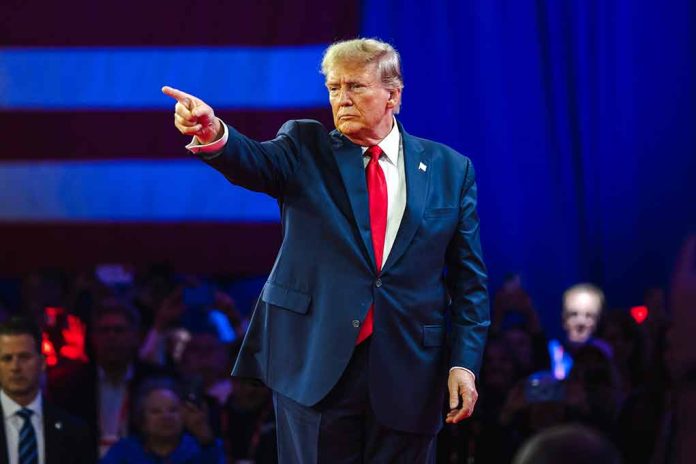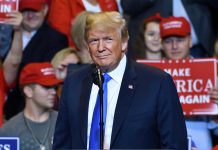
Donald Trump intensifies his campaign efforts in battleground states after Labor Day, aiming to secure crucial votes in the upcoming election.
At a Glance
- Trump ramps up campaign activities in key battleground states post-Labor Day
- Former President focuses on energy policy and fracking in Pennsylvania
- Trump and Harris share contrasting Labor Day messages
- Both candidates claim support for labor movement and workers’ rights
- Campaign strategies highlight differing approaches to economic issues
Trump’s Post-Labor Day Campaign Push
As the final phase of the presidential election campaign kicks off, former President Donald Trump is intensifying his efforts in crucial battleground states. Following Labor Day, Trump’s campaign is making strategic moves to mobilize supporters and attract undecided voters in regions vital for electoral success.
Trump’s campaign is focusing on states like Pennsylvania, where he plans to hold a rally in Johnstown, emphasizing energy policy and fracking. The importance of fracking in Pennsylvania cannot be overstated, as it supports over 93,000 jobs in the oil and natural gas industry. Trump’s “Drill, Baby, Drill” slogan promotes increased domestic oil production, a message that resonates with many workers in the state.
Contrasting Labor Day Messages
The Labor Day holiday saw Trump and Vice President Kamala Harris sharing markedly different messages on social media. Trump’s message criticized the current administration’s economic policies, while Harris focused on thanking labor movement organizers and unions for their contributions to workers’ rights.
“Happy Labor Day to all of our American Workers who represent the Shining Example of Hard Work and Ingenuity. Under Comrade Kamala Harris, all Americans are suffering during this Holiday weekend – High Gas Prices, Transportation Costs are up, and Grocery Prices are through the roof. We can’t keep living under this weak and failed ‘Leadership’,” Trump wrote.
In contrast, Harris stated, “On Labor Day, we thank the organizers, activists, workers, and leaders of the labor movement who have helped build this nation. Our entire country benefits from the work of unions because when unions are strong, America is strong.”
Campaign Strategies and Labor Support
Both Trump and Harris claim to support the labor movement, but their approaches differ significantly. Trump’s campaign spokesperson, Karoline Leavitt, stated, “President Trump is making lasting inroads with union leaders and broadening the Republican tent in a historic way,” while blaming Harris for inflation.
Harris, on the other hand, has a history of supporting labor and workers’ rights throughout her career. Her campaign manager, Julie Chavez Rodriguez, emphasized, “Kamala Harris has fought for labor and workers’ rights her entire career, during her time as a State Attorney General, United States Senator, and as Vice President.”
Recent major strikes have energized unions, potentially benefiting the Biden-Harris ticket. As Bob Bruno, director of the Labor Education Program at the University of Illinois Urbana-Champaign, noted, “It suggests labor’s got some muscle and some fire in their tank. If you think you can win…you’re really gonna push a whole lot harder.”
Economic Proposals and Battleground Focus
Trump’s campaign promises include expanding tariffs on foreign countries to protect American businesses, promoting energy independence, and banning foreign ownership of U.S. infrastructure. These proposals aim to appeal to workers concerned about job security and economic stability.
Meanwhile, Harris has proposed measures to reduce the cost of groceries, housing, and essential goods, including tax cuts and a federal ban on price gouging. These initiatives are designed to address the economic concerns of working-class Americans.
As the campaign intensifies, both candidates are expected to continue their focus on battleground states, with Trump’s upcoming rally in Pennsylvania serving as a prime example of this strategy. The race for the White House is heating up, and the support of labor unions and working-class voters could prove crucial in determining the outcome of the 2024 election.














